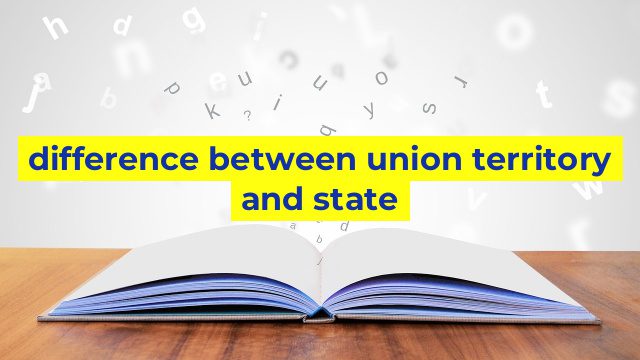Understanding the Difference between Union Territory and State in India
India is a vast country with diverse cultures, languages, and states. The Indian Union comprises 28 states and 8 union territories. While the states have their own government, the union territories (UT) are directly ruled by the central government.
What is a Union Territory?
A union territory (UT) is a type of administrative division in India, which is directly ruled by the President of India, who appoints an administrator to govern the UT. The Union Territories do not have their own elected governments, unlike States.
What is a State?
A State in India is a geographical region with its own elected government, consisting of Legislative Assembly and Chief Minister. The States have their own Constitution, Administrative setup, and Judiciary system.
Differences between Union Territory and State
The key differences between the Union Territory and State in India are as follows:
- Governance: In the Union Territory, the Central Government governs directly, while in State, the State Government governs.
- Elected government: Union Territories do not have their own elected government, while States have their own elected government.
- Constitution: Union Territories do not have their own constitution, while States have their own constitution.
- Administrative setup: Union Territories have fewer administrative powers than the states, which have a more complex and evolved administrative system.
Examples of Union Territories and States in India
Here are some examples of Union Territories and States in India:
Union Territories:
- Andaman and Nicobar Islands
- Chandigarh
- Dadra and Nagar Haveli and Daman and Diu
- Lakshadweep
- Delhi
- Puducherry
States:
- Maharashtra
- Uttar Pradesh
- Karnataka
- Rajasthan
- Andhra Pradesh
- Tamil Nadu
Conclusion
In summary, Union Territories and States in India differ in terms of governance, elected government, constitution, and administrative setup. Each of these territorial units plays a crucial role in the overall governance and administration of India. Understanding their roles and functions is vital for anyone looking to do business, work, or visit different parts of India.
Table difference between union territory and state
| Union Territory | State |
|---|---|
| Administered directly by the central government | Administered by an elected state government |
| Has a lieutenant governor or an administrator appointed by the President of India | Has a Chief Minister appointed by the Governor of the state |
| Does not have a separate constitution or legislative assembly | Has a separate constitution and legislative assembly |
| Cannot adopt its own laws, policies, or regulations without the approval of the central government | Can adopt its own laws, policies, and regulations without the approval of the central government |
| Examples: Delhi, Chandigarh, Lakshadweep, Andaman and Nicobar Islands | Examples: Uttar Pradesh, Maharashtra, Tamil Nadu, Karnataka |

